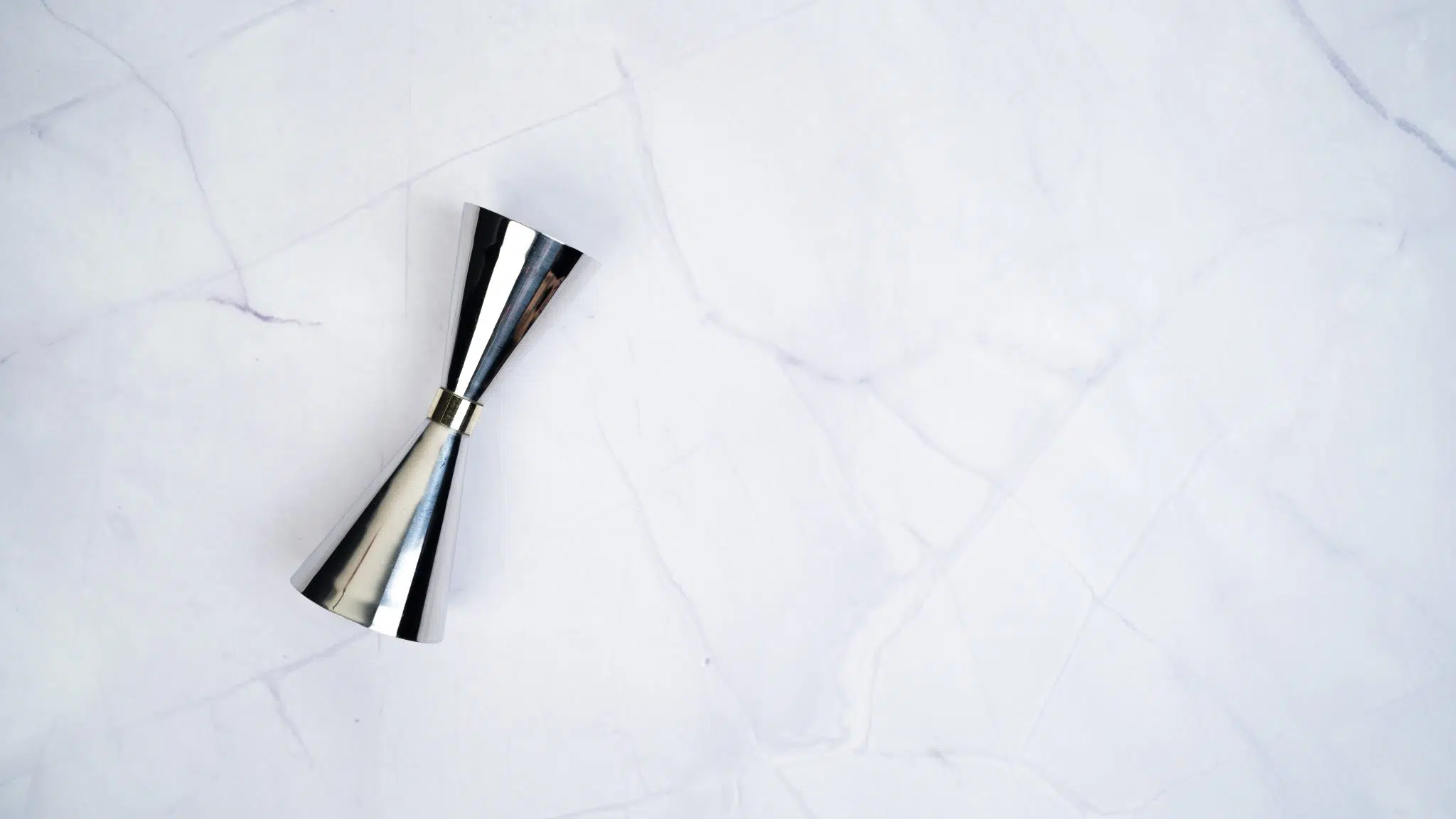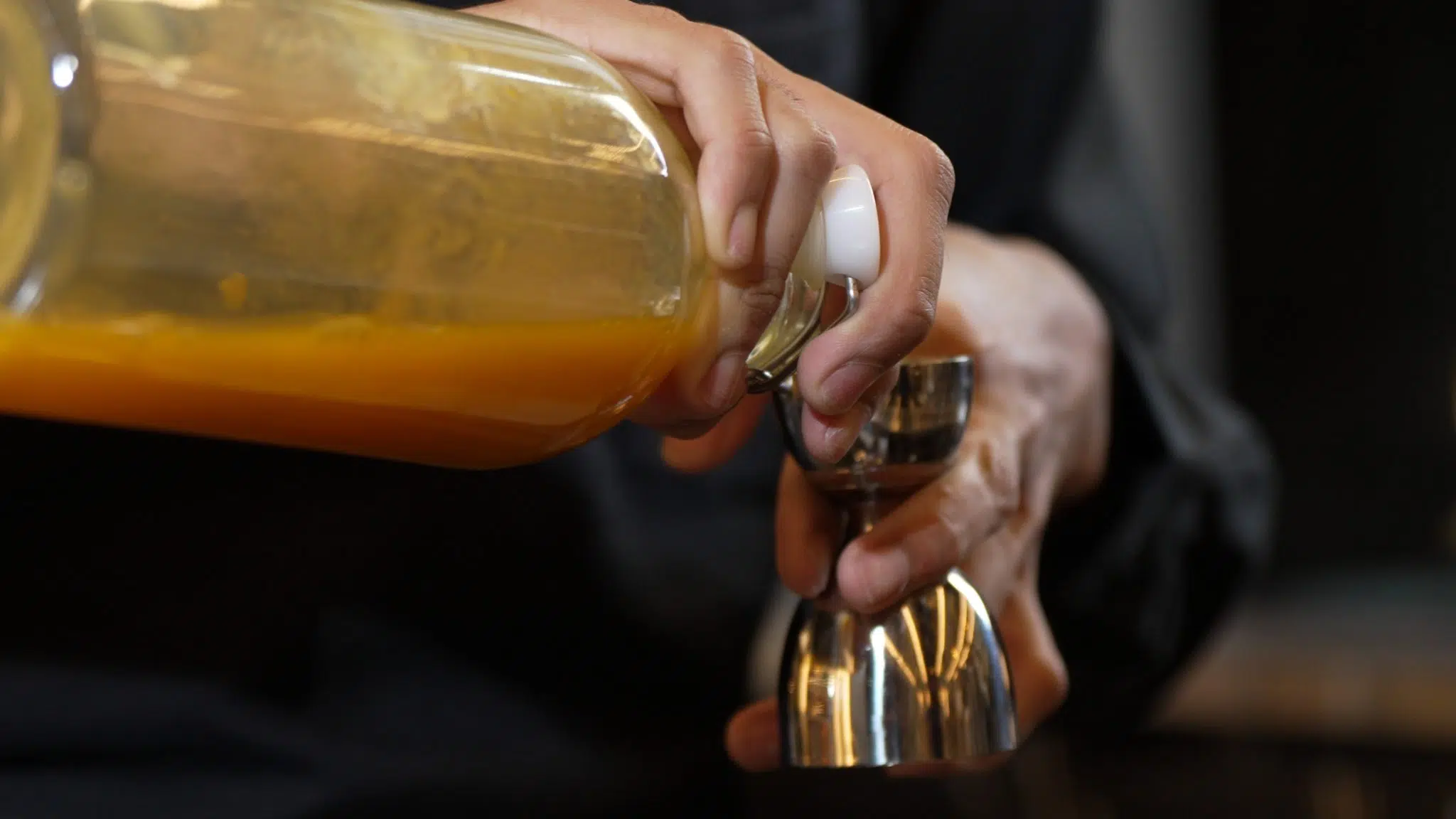If you’ve ever been behind a bar or even just watched a pro bartender in action, you’ve likely seen a jigger. Maybe you’ve even wondered what that tiny little cup is doing in a world of colorful bottles and shiny tools. But here’s the thing: the jigger might just be the unsung hero of a great cocktail. It’s the one tool that keeps your drinks balanced, consistent, and, let’s face it, drinkable.
This article discusses the specifics of jiggers, covering their types, sizes, and measurements to provide a comprehensive understanding of this bartending tool.
What Exactly is a Jigger?
A jigger is a small measuring tool used by bartenders to accurately pour specific amounts of alcohol, typically featuring two sides with different capacities, commonly 1.5 oz and 1 oz.

Why Do We Need a Jigger?
Precision. That’s the name of the game. Ever had a cocktail that was too boozy? Or maybe too weak? That’s what happens when you skip the jigger and rely on free-pouring. A jigger keeps things consistent, which is especially important if you’re trying to replicate a recipe to perfection. It’s not just for show; it’s a tool for nailing flavor balance every single time.
The History of the Jigger
A quick fun fact before we jump into the nitty-gritty: the jigger has been around for quite a while. The term “jigger” itself is believed to come from an old British measurement that was roughly equivalent to a shot of alcohol. Some say the name also came from the sailing world, where a “jigger mast” was the smallest of a ship’s masts. Either way, bartenders have been using some form of a jigger for centuries to perfect their craft. And here we are today, still respecting that tradition, albeit with more stylish versions.
Types of Jiggers: More Than Just a Simple Cup
Yes, jiggers come in different shapes and sizes, and no, they aren’t all the same. Let’s break it down:
-
Double Jigger
This is the most common type. One side usually holds 1.5 oz (44 ml), while the other holds 0.75 oz (22 ml). It’s versatile, easy to use, and perfect for mixing most cocktails.

-
Single Jigger
This guy is a bit simpler. It’s just one size, often used at home when you’re not mixing complex drinks. Less common in professional settings, but hey, it gets the job done.

-
Japanese Jigger
A sleek, elongated version of the double jigger, it’s all about precision and style. It tends to have more defined, smaller measurements, making it perfect for craft cocktail bartenders who need that extra touch of accuracy.

-
Bell Jigger
The bell-shaped design isn’t just about looks. It offers a comfortable grip, so you’re less likely to spill. It’s a solid option for those of us who may not have a steady pour just yet.

-
Multi-level Jigger
Think of this as a jigger with bonus features. This jigger has steps inside, allowing for multiple measurements in one tool. It exists in different shapes and it’s a tool that lets you measure various quantities all in one. Handy, right?
Sizes and Measurements: What’s in a Jigger?
Different regions use different jigger sizes, which means that a “standard” measurement in one country may not be the same in another. The following are common jigger sizes found around the world:
- US Standard: 1.5 oz (44 ml) on one side and 0.75 oz (22 ml) on the other.
- UK/European Standard: 25 ml (0.85 oz) on one side and 50 ml (1.69 oz) on the other.
- Australian Standard: 30 ml (1 oz) on one side and 15 ml (0.5 oz) on the other.

Metric vs. Imperial Conversions
Understanding the conversions between ml and oz is key when using recipes from different countries. Here’s a quick cheat sheet:
- 1 oz = 29.57 ml
- 0.75 oz = 22.18 ml
- 1.5 oz = 44.36 ml
- 2 oz = 59.14 ml
And if you’re ever in doubt, always round up. It’s better to have a little more than a little less, right?
How to Use a Jigger Like a Pro
Using a jigger isn’t rocket science, but there are some tricks to getting it right.
- Grip: Hold the jigger between your thumb and forefinger for stability. You can also hold it between the index and the middle finger if you find it more comfortable.
- Pouring: For the cleanest pour, make sure your jigger is level. Overfilling can lead to spilling, which isn’t just messy—it throws off your measurements.
- Multi-ingredient Cocktails: When mixing more complex drinks, use the jigger to measure each ingredient before pouring into the shaker or glass. It’s tempting to eyeball it, but remember: precision is key.

Jigger vs. Free Pouring: Why We Stick to Measuring
Sure, free pouring looks cool, but it’s easy to mess up. One heavy-handed pour and your cocktail’s balance goes right out the window. That’s why jiggers are essential—especially when you’re mixing drinks with multiple spirits. Consistency is everything. Plus, if you ever plan to make the same cocktail again, using a jigger ensures you can recreate it with the same flavor profile.
Accuracy and Calibration: Keeping Your Jigger in Check
Not all jiggers are accurate straight out of the box. Higher-end jiggers tend to be spot on, but cheaper models can sometimes be off by a milliliter or two. Here’s how to test it: fill your jigger with water and use a kitchen scale to check if the weight matches the measurement. If it’s off, make a mental note, or better yet, invest in a better jigger.
How to Choose the Right Jigger
When it comes to choosing the perfect jigger, think about what kind of drinks you’ll be making.
- For beginners, a basic double jigger will do the trick.
- If you’re getting more into the craft of cocktails, consider a Japanese jigger for its precision.
- And for those who just want to make a drink after a long day? Well, even a single jigger will make you feel like a pro.

Cleaning and Maintaining Your Jigger
It’s a simple tool, but keeping your jigger in top shape is crucial. Rinse it between uses to avoid flavor contamination. For a deeper clean, wash with warm, soapy water and dry immediately to prevent spots or tarnishing—especially if you’re working with copper or brass.





